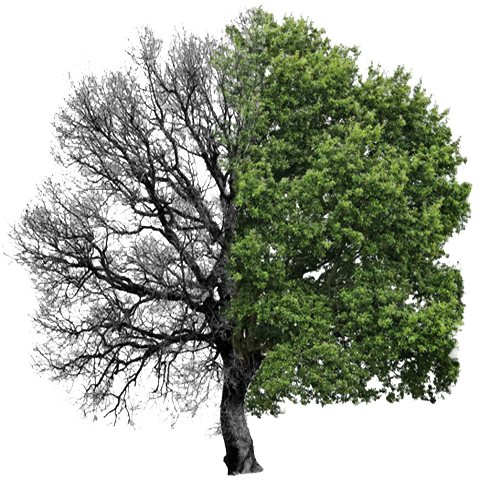
Bipolar Disorder is the current definition of the more classical manic-depressive illness, and is an episodic disease marked by oscillations in mood of variable intensity from depression (melancholia) to hypomania or mania. Thinking, energy, and behavior can also change in a way that affects the individual’s occupational, social, and interpersonal relationships.
The lifetime prevalence of bipolar disorder has been estimated at around 1% for the most severe cases but may increase to 2%–5% if less severe cases are included. Women tend to be affected more than men with a ratio of 1.4:1, which is inferior to that found in nonbipolar major depressive disorder. The median age-at-onset is about 20 years. It has been suggested that all major mood disorders are more common in recent years compared to the past. It is still debated however whether this increase is due to a better recognition of the illness or whether it is associated with the impact of substance abuse and other environmental aspects. Predisposing factors to the development of bipolar disorder are cyclothymic and hyperthymic temperaments, as well as childhood Attention Deficit Hyperactivity Disorder.
Other biological findings also are far from definitive. The findings from structural and functional brain imaging techniques remain limited and inconclusive. Older biochemical findings in measurements of stress-sensitive neurotransmitters and neurohormones have proved nonspecific by diagnosis.
Mania is characterized by an elevated or irritable mood, pressured speaking, increased physical activity, increased or uninhibited sexual drive, and decreased need for sleep. Cognitive disturbances include rapid, overproductive, semilogical thinking, the content of which may refer to increased self-esteem and grandiosity. Patients may continuously change topics and use loose connections; their attention may also be impaired by a high level of distractibility. Attempts to interrupt increased activities may provoke irritable or angry responses. Overactivity may include incessant, disorganized, or aimless motion. Social, interpersonal, and occupational functioning may be disturbed by excessive self-confidence, lack of inhibition, intrusiveness, impulsivity, recklessness, irritability, and sometimes aggressiveness. Risk-taking is common, and may include unrealistic plans or business initiatives, overspending, reckless driving, with or without abuse of alcohol or illicit drugs. Psychotic features may be present with grandiose delusions based on religion and power or persecutory ideation related to the belief of being an important person. Hallucinatory phenomena may more rarely occur with the same grandiose content. The mood-altered state is defined as being hypomanic if most of the described symptoms are present, with the exception of the psychotic features, and there is no substantial impairment in social, interpersonal, or occupational functioning. In both cases, but to a different extent, judgement may be impaired.
The symptomatology of depression in a BPD does not differ from that in unipolar recurrent depression. It is mainly characterized by depressed mood, psychomotor retardation with a low level of energy, lassitude, decreased sexual drive, changes in appetite and weight loss, and sleep disturbances. Thinking processes are slow, attention is impaired by lack of interest, memory processes are impaired as well, reaction times are prolonged, problem solving strategies are limited, and feelings of guilt, worthlessness, self-blame, despair, hopelessness may be present. Suicidal thoughts, gestures, or attempts may occur. Self-esteem is usually low with unrealistic, negative and pessimistic self-evaluations. Somatic complaints such as headaches, muscular aches, gastrointestinal, respiratory, cardiac, and other vegetative symptoms, may be present and more prominent than psychic symptoms. Psychotic features may be present with content of pessimism, nihilism, worthlessness, self-blame, and guilt. Persecutory ideation and delusions may stem from the idea of receiving a just punishment. Perception disturbances and hallucinations may more rarely occur. Depressive symptomatology may impair the persons’ social, interpersonal, and occupational functioning, and their judgement capacity at various levels.
The presence of agitation, irritability, inner tension, racing thoughts, or mood fluctuations may accompany both depressive, hypomanic or manic episodes and are considered mixed features. A patient may communicate depressive feelings along with subjective or objective agitation, irritability, internal rage, and racing thoughts whereas a a dysphoric manic patient may be also agitated, aggressive, suicidal, with feelings of guilt, and irritable. A correct diagnosis of mood mixed states is important because they tend to have more hospitalizations, a higher chance of suicidal behavior, and a worse response to long-term treatments.
Bipolar disorders are diagnosed when one or more depressive episodes are preceded or followed by one or more manic or hypomanic episodes over the years. Bipolar types I or II describe the occurrence of at least one episode of mania or hypomania, respectively. BP II disorder is found in 13-20% of all bipolar patients and is more frequent in women.
From a psychological perspective, bipolar mood disorder is characterized by narcissistic features, lack of empathy, and unstable interpersonal relationships. The predominant defense mechanisms are denial in mania, and self-aggressiveness against internalized object loss in depression. Phenomenologically, mania has been interpreted as the result of an attempt to compensate for depressive feelings, while depression as an expression of guilt for the manic behavior. Behavioristic theories see depression as a consequence of learned helplessness after repeated unavoidable experiences, and cognitive approaches see it as an expression of negative self-evaluation and beliefs activated by stress. In both mood expressions, personality traits may include emotional dependence, lack of awareness of internal emotional responses in oneself or others, and of appreciation of differences between actual and idealized situations.
Treatment of acute bipolar episodes involves antidepressants for bipolar depression and mainly antipsychotics for mania. However, prolonged antidepressant treatments in bipolar depression may have a destabilizing effect in predisposed patients which manifests as an increased rate of mood-cycling or switching from depression to manic, mixed, or dysphoric states. It has not been established whether tricyclic or monoamine oxidase inhibitors have a higher risk of inducing mood shifts than modern antidepressants. There is less evidence that antipsychotic or other sedatives used for the treatment of mania can induce depression in BPD. Electroconvulsive therapy may be a temporary alternative in severe cases and can be beneficial in manic, depressive, and mixed episodes.
In addition to the treatment of acute episodes, BPD patients need to be treated for the prevention of the recurrences of mania and depression. Lithium salts are the best established therapeutic strategy for this purpose. The treatment tends to have a slow response at onset and may need to be adjuncted to an antipsychotic therapy in the treatment of acute mania. Lithium is effective in prevention and delay of recurrences, and in lessening the intensity of manic and depressive states in about two-thirds of BPD patients over many years.
Alternative or adjunctive treatments to lithium include a growing number of anticonvulsants such as carbamazepine, valproic acid, lamotrigine, topiramate, and gabapentin. Valproic acid and its salts have been shown to have a particularly potent and rapid antimanic effect and are also employed empirically for maintenance treatment, although the long-term protective effects of this agent against bipolar depression and mania are not fully proved. Antipsychotic drugs in addition to their short-term antimanic effects, are also used to treat breakthrough episodes of mania but their action in the prevention of recurrences of bipolar depression or mania for prolonged periods is not established. Clozapine has been tried for the treatment of resistant bipolar disorder; olanzapine and quetiapine for the treatment of bipolar depression, especially with concomitant psychotic features (Rotschild et al, 1999), and for the acute treatment of mania (Tohen et al, 1999). Despite the testing and use of additional anticonvulsant, and of novel antipsychotics for the treatment of BPD, none has yet proved superior to lithium for long-term management of BPD.
Psychotherapeutic efforts are much less evaluated in bipolar than in depressive disorders, in part reflecting traditional views that bipolar patients are often less able to accept their condition as a disorder requiring treatment. The high rate of recurrences in many patients has, however, led to the use of psychotherapeutic interventions that seem to decrease the frequency of recurrences in adjunct to the pharmacological long-term treatments. The most evaluated interventions include Interpersonal Psychotherapy, aimed at the improvement of coping strategies for social and interpersonal relationships and ; Cognitive-Behavioral Therapy which attempts to modify inappropriate, self-detrimental, or exaggerated concepts by encouraging development of more flexible schemas, and rehearsal of new cognitive and behavioral responses. Psychoeducational and group-based or individual supportive treatments are also highly advisable. In general, all psychosocial interventions should have a psychoeducational approach aimed at increasing knowledge and insight of the illness and recognizing the first symptoms before an acute episode occurs.
